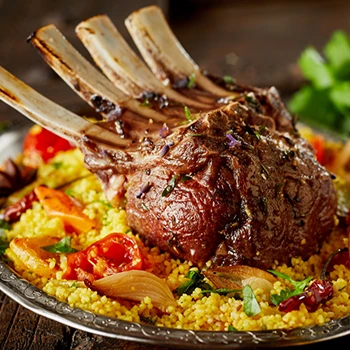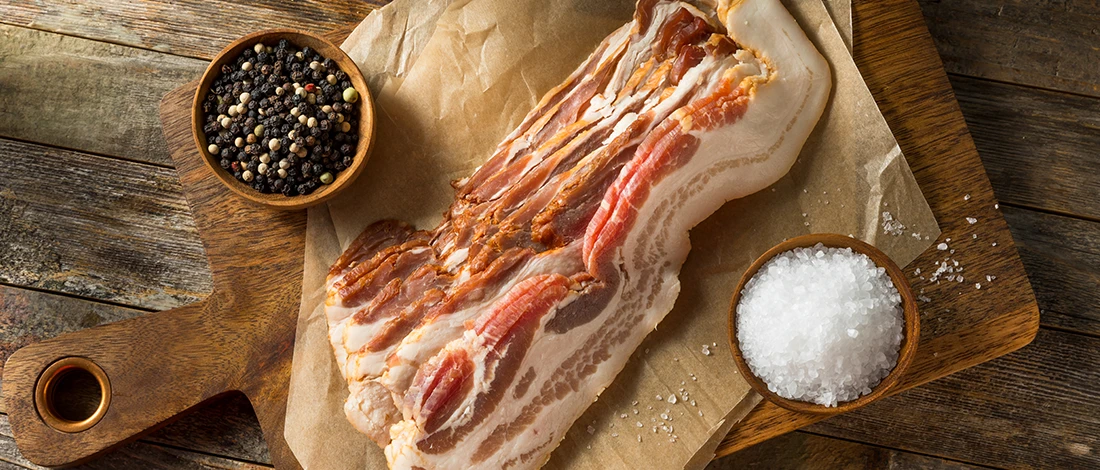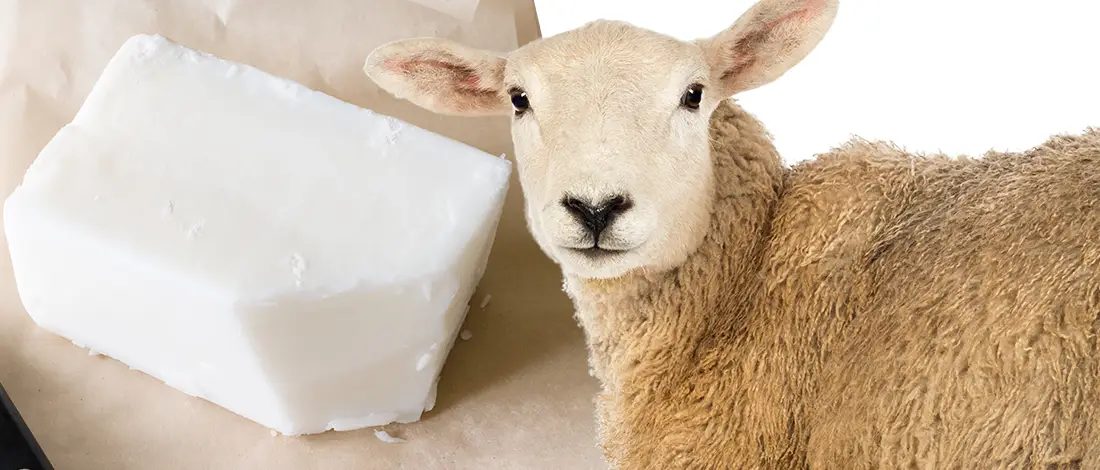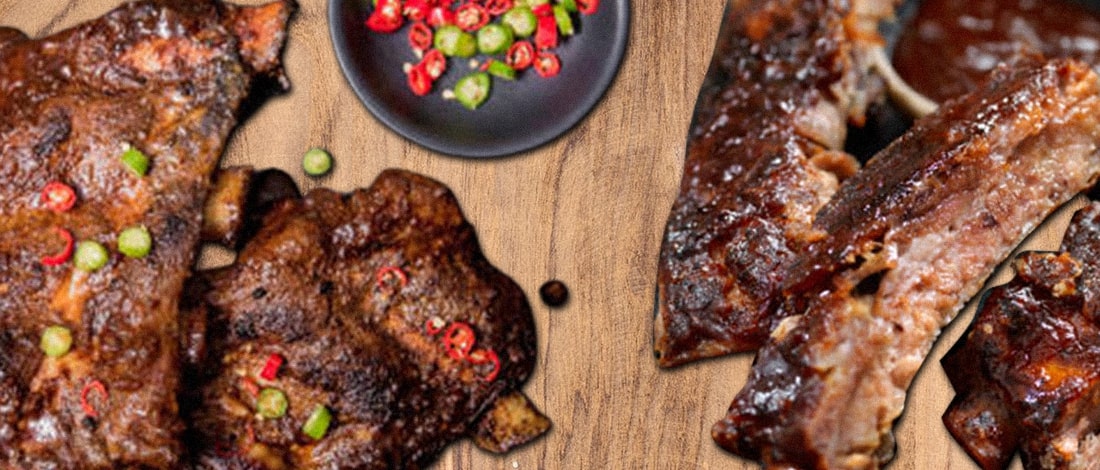When I started my carnivore diet a decade ago, I didn’t know the difference between mutton and lamb. After all, they are both sheep meat. But, there are significant differences between the two.
I wanted to learn as much as possible about mutton and lamb, so I talked with my butcher and cooked countless mutton and lamb cuts to get all the ins and outs.
No matter which one you go for, you should make sure to buy lamb and mutton from quality suppliers. Over the past two years, I’ve been ordering my meat from ButcherBox, an online meat delivery service that sells high-quality meat.
I’ll explain how these two types of meat differ according to the animal’s age, flavor, texture, smell, and much more.
Quick Summary
- The biggest difference between lamb and mutton is the sheep’s age.
- Mutton is tougher meat, while lamb is more tender.
- Mutton is best for slow cooking, while lamb is best grilled, braised, or roasted.
7 Differences Between Lamb and Mutton

Here’s the breakdown of all the major differences between these types of meat.
1. Age
The biggest difference between lamb and mutton is in the animal's age. Lamb meat is meat from young sheep, specifically younger than one year of age. Mutton meat is meat from mature sheep, specifically between two to three years of age.
Moreover, there are two lamb meat subcategories:
- Baby Lamb — Lamb meat from animals aged between six to ten weeks. It’s mostly used for making extremely tender lamb chops because of its small size.
- Spring Lamb — Lamb meat from animals aged five to six months old. This is the most common and popular lamb cut.
There is also one mutton subcategory called yearling mutton. This is mutton meat from animals aged 12 to 24 months [1].
2. Taste

Another big difference between lamb and mutton is in their taste. Mutton has a more gamey taste compared to lamb cuts. Lamb has a delicate, mild, and even somewhat sweet flavor.
Spring lamb (from an animal younger than three months old) has an even more tender taste and mild flavor.
The difference in taste is due to the animal’s age and diet. Lamb has a more natural diet and is usually grass-fed.
Lamb is much younger, and the meat didn’t have the time to develop a lot of flavor. On the other hand, mutton comes from older sheep with more fat than muscles, resulting in a stronger, gamey flavor similar to venison or goat meat.
However, you can soften the bold mutton flavors with different cooking methods (more on those below).
The taste is also the biggest reason why Americans usually don’t like mutton. This meat is more common in the Middle East and Europe.
3. Color and Smell
Lamb has a light pink color to pale red when raw. Mutton is a deep, dark red color when raw.
Raw lamb smells sweet and fresh, with a faint grass scent. Raw mutton has a much stronger scent, almost pungent with an aged gamey scent.
Mutton from wool-producing sheep harvested at two years or older also has an oily smell because it contains lanolin in the sebaceous glands [2].
Also Read: Is Lamb Red Meat?
4. Price

Lamb is more expensive than mutton. This goes for most lamb and mutton cuts. Certain cuts, such as lamb chops and rack of lamb, are very expensive because butchers use French trimming to remove meat from the ribs.
You can pay from $10 to $40 per pound of lamb, with most lamb cuts, such as loin chops, shanks, and lamb loin, on the higher end of this range [3].
Overall, lamb is one of the costliest meat cuts. Lamb is also less common than mutton, so the demand also drives the price up.
Mutton is much more affordable compared to lamb meat. A pound of mutton costs around $10 for most cuts.
5. Cooking Method
Mutton is tougher meat and can be very fatty, so it should be slow-cooked or braised to break down the tough meat fibers.
Braising is when meat is browned in fat and then slowly cooked in a pan with a little liquid. This can be done in the oven or a stovetop and is best for cuts such as shoulder and mutton chops.
Tip: You can marinade mutton to tenderize the mutton meat and add more flavor.
You can also cook mutton cuts in the oven. Keep it uncovered so that it’s brown outside and has a moist interior. Finally, you can make a mutton stew to tenderize the meat and bring out the flavor.
Lamb is more versatile and tender meat, and it’s best when grilled, braised, or roasted [4]. Also, the cooking method depends on the cut. For example, lamb chops are great when cooked quickly and grilled or pan-fried. Lamb burgers should also be grilled. Lamb shanks are best for pressure cooking.
“Lamb shoulder and shank are less tender cuts of meat that are best prepared using moist cooking methods including braising and stewing.”
- American Lamb Official Website
You can also dry brine and salt the lamb meat for 40 minutes to break down the proteins.
Overall, mutton needs slow cooking because of the meat's age and toughness. Young lamb is tender meat with a delicate flavor that’s cooked faster.
Also Read: What Is the Healthiest Way to Cook Meat?
6. Texture
Mutton has a firmer texture than lamb because it comes from older sheep. Older lamb had more time to develop dense muscles and more fat, so mutton meat can be dry or chewy.
Lamb meat is more tender because sheep don’t have time to develop a lot of connective tissues. Lamb meat is more tender and moist.
7. Common Cuts

Mutton and lamb come from the same animal, so both are available as the same cuts of meat. Of course, lamb cuts are smaller than mutton.
These are the most common cuts of lamb and mutton:
- Shoulder - Shoulder muscles work hard while the animal is alive, so this can be a tough cut. Both lamb and mutton shoulder should be cooked low and slow. You can leave the bone in for extra flavor. The shoulder is usually cooked whole, halved on the bone, or cut into shoulder chops.
- Rack - Comes from the ribs. This is tender and expensive meat. It can be cooked whole or divided into chops. It’s usually grilled or roasted.
- Loin - Loin chops come from this area. They are best grilled or fried. Lamb loin is one of the most tender and sought-after lamb parts.
- Rump - Comes from the sheep’s rear. It’s tender and full of flavor. You can pan-fry the rump, slice it, or cut it into chops. Make sure not to overcook it, or it’ll become tough and dry.
- Leg - Another hard-working part of sheep. The leg has a strong flavor, especially if it comes from mutton. It resembles a wild boar or rabbit flavor. It’s usually cooked whole, but you can cut it into pieces and grill it.
- Shank - Very flavorful, but as most sheep meat, especially mutton, it should be cooked for a long time, or it’ll be tough. You can braise it for a melting texture.
- Neck - An inexpensive, tough cut that needs to be slow-cooked. It’s great for stews and kebabs.
Related Articles:
FAQs
Is Lamb Goat Meat or Mutton?
Lamb is neither goat meat nor mutton, but it comes from sheep. In fact, both mutton and lamb come from sheep. Lamb comes from young sheep, while mutton comes from fully grown sheep.
Why Is Mutton Not Popular?
Mutton isn’t popular because it has a strong gamey flavor. This is because mutton comes from older sheep, with fully developed muscle and connective tissue. However, mutton is popular in the Middle East and parts of Europe.
Is Mutton Cheaper than Lamb?
Yes, mutton is cheaper than lamb. Mutton is up to 70% cheaper than lamb, but this depends on the specific type of cut.
Are Lamb and Mutton Red Meat?
Yes, lamb and mutton are red meat because they come from mammals, i.e.sheep.
References:
- https://www.fsis.usda.gov/sites/default/files/media_file/2020-07/19-04-the-lamb-company-090519.pdf
- https://www.sciencedirect.com/topics/agricultural-and-biological-sciences
- https://www.ams.usda.gov/mnreports/lswlnvfeatures.pdf
- https://www.americanlamb.com/cooking-techniques#








